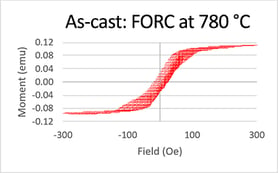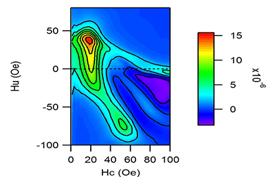A new paper just published in MRS Advances and co-authored by a Lake Shore senior scientist explores the utility of first-order reversal curve (FORC) analysis for characterizing nanocomposite magnetic materials from room temperature to temperatures as high as 800 °C.
 Authored by Brad Dodrill of Lake Shore, Paul Ohodnicki of the National Energy Technology Lab, and Michael McHenry and Alex Leary of Carnegie Mellon University, the paper discusses the FORC protocol and presents FORC results for two magnetic nanoparticle materials: CoFe nanoparticles dispersed in a SiO2 matrix, and FeCo-based nanocrystalline amorphous/nanocomposites.
Authored by Brad Dodrill of Lake Shore, Paul Ohodnicki of the National Energy Technology Lab, and Michael McHenry and Alex Leary of Carnegie Mellon University, the paper discusses the FORC protocol and presents FORC results for two magnetic nanoparticle materials: CoFe nanoparticles dispersed in a SiO2 matrix, and FeCo-based nanocrystalline amorphous/nanocomposites.
FORC analysis is indispensable for characterizing magnetic interactions and coercivity distributions in nanoscale and other magnetic materials, providing information that is impossible to obtain from the hysteresis loop measurements alone.
For more about FORC analysis beyond its use for characterizing nanoparticle aggregates at high temperatures, be sure to download our 36-page FORC ebook. It details how this technique can benefit research into other magnetic materials, including permanent magnets, multi-phase ferrite magnets, and magnetic nanowire arrays.
Also, for researchers interested in employing FORC analysis in their lab, Lake Shore offers several electromagnet-based VSMs, including a new 8600 Series VSM for advanced measurement performance. The 8600 has been designed for fast measurements, providing field ramp rates to 10 kOe/s and data acquisition as fast as 10 ms/point. Coupled together with its 25 nemu moment sensitivity and integrated FORC data collection protocols of the system’s software, the 8600 Series executes FORC measurements quickly and with high precision, performing complex FORC data collection sequences in a fraction of the time required on other systems (as described in this published article).

